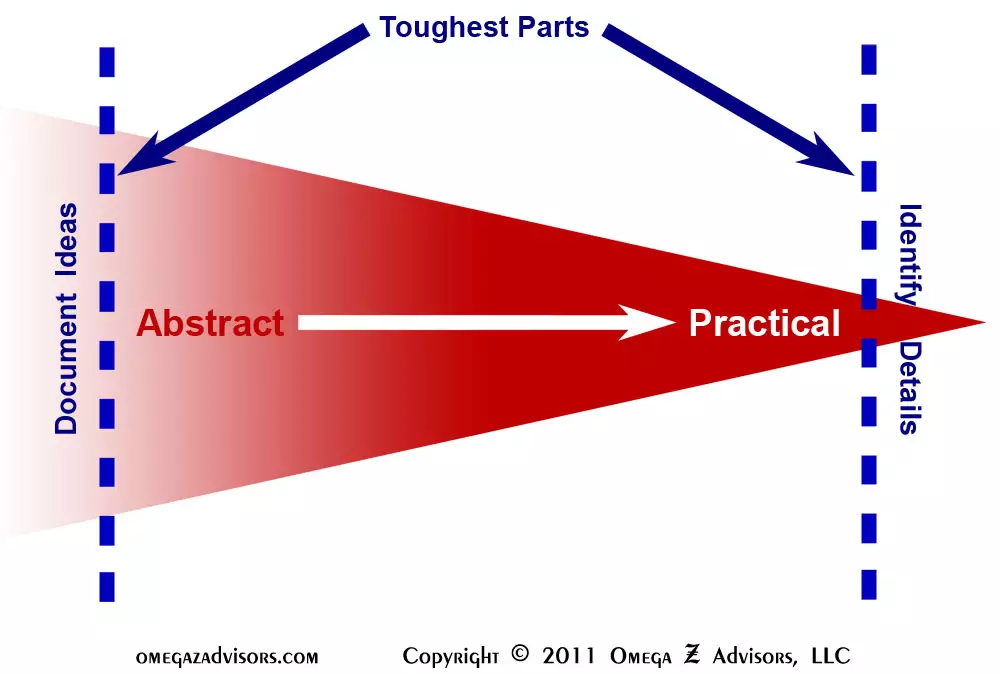Solving Problems Using the “Abstract to the Practical” Perspective
I’ve had a lot of success solving problems by trying to address the challenges of moving an idea from the abstract to the practical. It doesn’t matter what kind of idea it is – product, process, service or solution – the challenges remain the same. That means examining it from its initial inception (defining it) to its potential implementation (identifying details). I have found that people have the toughest times with the beginning and the end, so I start here.
First, I ask, “Have they defined the problem correctly?” Obviously, there is no point solving the wrong problem. People tend to define the problem too narrowly. That means they are addressing the wrong problem or restricting their set of potential solutions.
Second, I ask, “Have they identified details with enough specificity?” In most cases, people don’t. Where they see a single step, there are often two, three, five or ten. While it’s impossible and unnecessary to capture all details before implementation, the fact remains that many ideas fail here.
For example, the integration of new technology is often seen simply as a technology problem not a human one; the problem is defined too narrowly. No matter how good the technology, if people don’t embrace it or can’t use it, it’s no good. Often, training is the solution, but if we look into the details of training, we find too often it’s “one size fits all.” Everyone goes through the same training classes. It doesn’t take into account the important detail that employees assimilate technology at different rates. That means wasting training hours on users in which the training is too slow or too fast.
In problem solving it’s important to define the problem correctly, too often it’s too narrowly defined, and to refine the details, often they’re too general.


